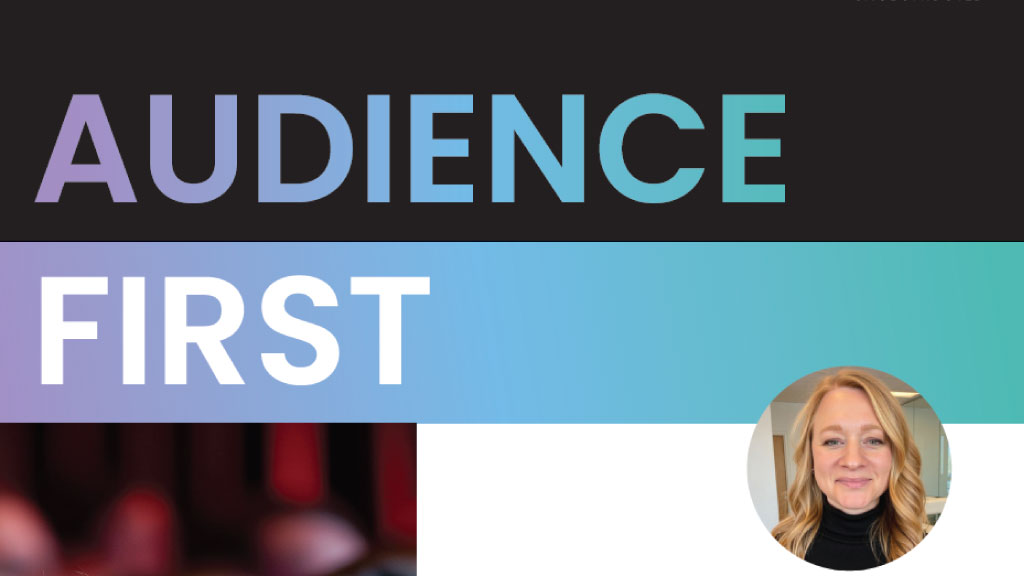Ruth Hartt is a leading relevance strategist for arts organizations, with a diverse background as an artist, educator, and nonprofit leader. She has spent years helping arts organizations embrace customer centricity to revolutionize audience development. Drawing from her experience at the Clayton Christensen Institute, Ruth brings a unique perspective to the arts sector, blending business innovation with actionable strategies to foster inclusivity, drive growth, and rethink traditional approaches.
Interview
Ruth, let’s start with the big picture. You’ve indicated a dramatic decline in attendance for classical music and other traditional art forms. Can you tell us more about what’s driving this shift?
Absolutely. The data is striking. There’s been a 65% decline in classical music attendance since 1982, and it’s not because people are staying home. In fact, pop concerts and sporting events are seeing record attendance. So, what does that tell us? People are still willing to spend money on certain experiences, but they don’t see the same relevance in traditional arts and culture as they once did. The digital revolution has brought significant changes to consumer expectations, and arts organizations need to work harder to prove their value. We’re competing with a broader entertainment landscape, and it’s time to stop assuming that people will come just because the event is happening.
That makes sense. With so many options out there, what can arts organizations do to recapture the attention of their audiences?
Arts organizations have got to pivot from the outdated product-centric approach. In the business world, research shows that companies putting the customer first are 60% more profitable. This is where arts organizations need to take a page from the corporate playbook. Instead of focusing solely on the product—whether that’s a concert, a play, or an exhibition—organizations should be asking, “What does my audience need or want from this experience?” Because people aren’t just buying tickets; they’re buying outcomes—whether that’s a fun night out, an opportunity to relax, or something meaningful to connect with. It’s crucial to understand those motivators and design experiences—and marketing strategies—that speak to them.
That’s a big shift from the traditional “if you build it, they will come” mentality. How can organizations start to gather and use that kind of audience data?
This is where we need to get more strategic. In the past, arts organizations have relied heavily on demographics, but demographics don’t drive purchasing behaviors—desired outcomes do. So, simply targeting by age or income isn’t going to give you the full picture. You need to dig deeper into audience motivations and desires. What are people looking for in their cultural experiences? Once you understand that, you can start to craft personalized messaging and experiences that truly resonate.
hat’s a great point. As demographics shift, how can organizations make sure they’re not only appealing to broader audiences but also reflecting the diversity within their communities?
The idea of what it means to be “cultured” has changed dramatically. Social prestige today, as David Brooks writes, is all about being fluent in both highbrow and lowbrow experiences. So it’s about more than just representation on stage or changing up the product—it’s about creating experiences that feel relevant to a wider range of people.
You’ve talked about relevance a lot. What does it mean for an arts organization to be relevant in 2024?
My definition of relevance is drawn from the etymology of the word—it’s original meaning is “to be helpful.” I also love how Nina Simon, author of “The Art of Relevance,” defines it: “Relevance isn’t about what you already know. It’s about what you’d like to know, where you’d like to go, and what experiences will help you get there.”
To stay relevant, arts organizations need to ask, “How can we help you get where you want to go?” It’s about more than just entertainment—it’s about showing consumers that we can provide the outcomes they seek. When arts organizations position themselves as truly helpful, they become much more relevant to the people they serve.
It sounds like there’s a lot at stake for organizations that don’t make these changes. What happens if they stick with business as usual?
When we look at our negative substitution rates and extrapolate out, the consequences are stark. If we continue with business as usual, performing arts organizations are projected to lose 50% of their patron base within just seven years. That’s a frightening statistic, but it’s also a wake-up call. If we don’t evolve and start putting the audience at the center of everything we do, we’re going to lose them. The world has changed, and we need to change with it. Now is the time to embrace innovative, outcome-driven strategies that help our communities see how relevant we truly are.
It seems like there’s a clear path forward, but it requires some fundamental shifts in thinking.
Exactly. It requires a shift from touting your output—your art form, your artists—to highlighting your outcomes. What are the experiences people are seeking, and how can we help them achieve those outcomes? It’s a new way of marketing the arts, but it’s crucial if arts organizations want to thrive in the years to come. This is about survival, yes, but it’s also about creating deeper, more meaningful connections with our audiences—and that’s where the real value lies.
Wath the full webinar here

